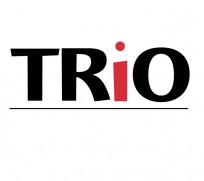 The TRiO programs, a collection of designated federally funded programs to prepare low-income and first-generation students (students from families whose parents do not have a four-year college degree) for college success, began nearly 50 years ago with the Economic Opportunity Act of 1964[1] and a pilot program called Upward Bound. With the vision of Lyndon B. Johnson’s “War on Poverty” – and in collaboration with several leaders of the time, including, but not limited to, Martin Luther King, Jr. (listen to an audio clip of Johnson and King talking about the conception of these programs – begins at 2:04) – Congress passed the Higher Education Act of 1965[2] and solidified the importance of a college education not only for those who were financially capable of attending, but for all students regardless of their financial status. Through programs from the “Great Society”, the Johnson Administration emphasized the importance of the higher education system and believed that these institutions were places that could facilitate the rising of the poor above their financial circumstances so they could become equals in a society that was stricken with inequality.
The TRiO programs, a collection of designated federally funded programs to prepare low-income and first-generation students (students from families whose parents do not have a four-year college degree) for college success, began nearly 50 years ago with the Economic Opportunity Act of 1964[1] and a pilot program called Upward Bound. With the vision of Lyndon B. Johnson’s “War on Poverty” – and in collaboration with several leaders of the time, including, but not limited to, Martin Luther King, Jr. (listen to an audio clip of Johnson and King talking about the conception of these programs – begins at 2:04) – Congress passed the Higher Education Act of 1965[2] and solidified the importance of a college education not only for those who were financially capable of attending, but for all students regardless of their financial status. Through programs from the “Great Society”, the Johnson Administration emphasized the importance of the higher education system and believed that these institutions were places that could facilitate the rising of the poor above their financial circumstances so they could become equals in a society that was stricken with inequality.
Since that time, there have been several amendments to the Higher Education Act of 1965, some of which have resulted in the removal of programs (Title I, Community Service and Continuing Education Programs[3]), the narrowing of programs (Strengthening Developing Institutions[4]), or the building up of programs within the bill. Despite funding challenges and changes within the Higher Education Act of 1964, with the help of TRiO students, staff, and community members, the TRIO programs have not only survived, but have grown from one program in 1964[5] to eight programs today[6].
The term “TRiO” refers to the first three programs of this nature that fell under the Higher Education Amendments of 1968, Upward Bound (UB or Classic UB – 1964), Talent Search (TS – 1965), and the then newly proposed, Special Services for Disadvantaged Students (SSDS – 1968), now known as Student Support Services (SSS). The remaining five TRiO programs include Veterans Upward Bound (VUB – 1972), Educational Opportunity Centers Program (EOC- 1972), Ronald E. McNair Postbaccalaureate Achievement Program (McNair – 1986), Upward Bound Math-Science (UBMS – 1990), and Training Program for Federal TRiO Programs (TRiO Staff Training)[7]. More information about TRiO is available on the Department of Education website.
(Excerpt and references updated from Crista Gray, A History of TRIO Programs: The illusion of stability, unpublished paper, 2006. All rights reserved. Available upon request.)
[1] John Groutt, Milestones of TRIO History, Part I, Opportunity Outlook, Jan. 2003, 21-27.
[2] The Higher Education Act of 1965, Pub. L. 89-329, 79 STAT 1219,1249-1250 (1965).
[3] See reauthorization – The Higher Education Amendments of 1998, PL 105-244, 112 Stat 1581, 1652-1656 (1998). (LEXIS).
[4] Id. This section is now mainly devoted to Historically Black Colleges and Universities, as well as other institutions serving predominately underrepresented students.
[5] Even though Upward Bound was not part of the Higher Education Act of 1965, it was the first program funded that became part of the TRiO programs.
[6] Higher Education Opportunity Act, Pub. L. 110-315, §403, 112 STAT 3078, 3191-3206 (2008).
[7] National Clearinghouse, Do you know TRiO? A TRiO history factsheet.